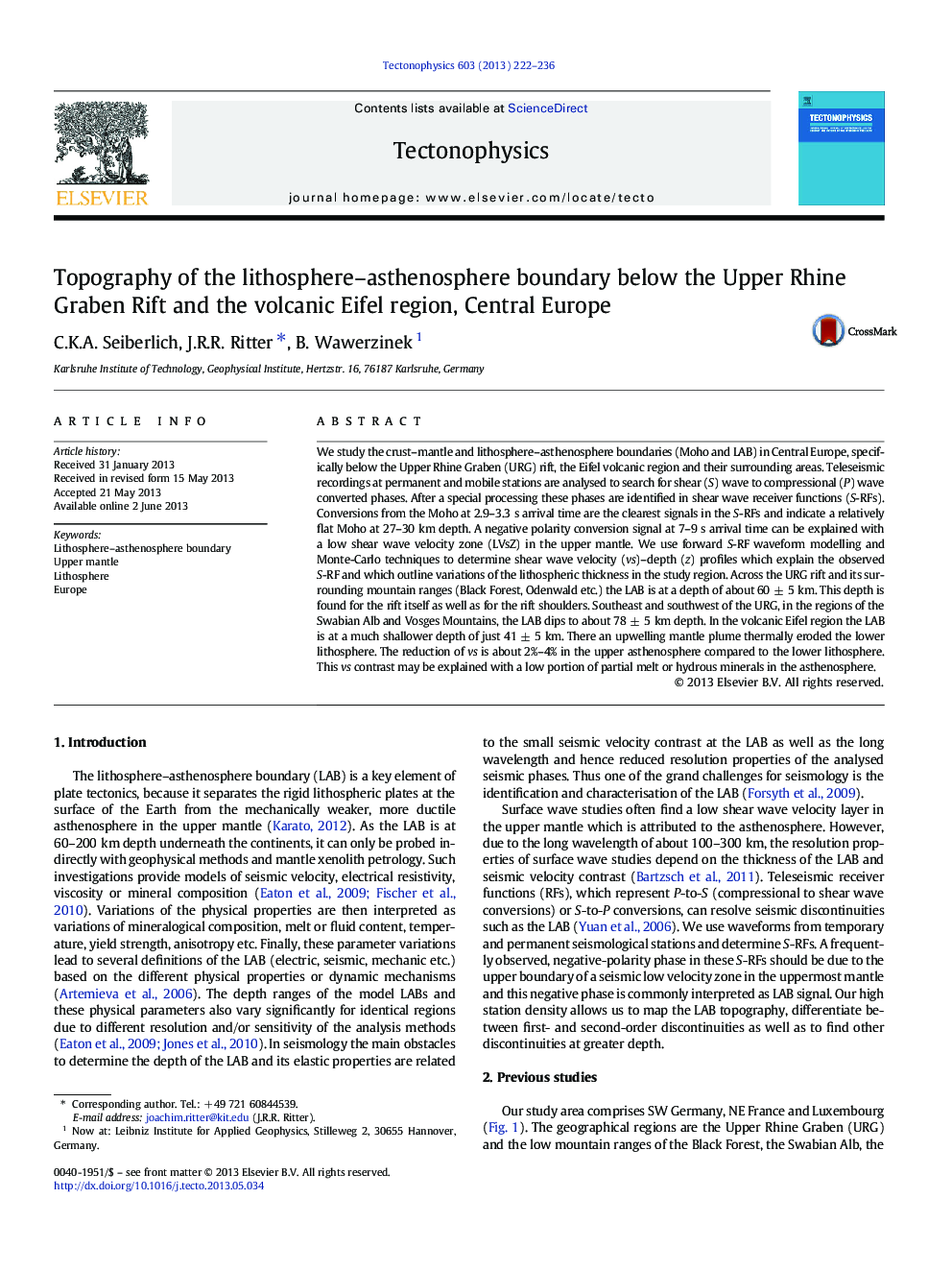| کد مقاله | کد نشریه | سال انتشار | مقاله انگلیسی | نسخه تمام متن |
|---|---|---|---|---|
| 4692203 | 1636784 | 2013 | 15 صفحه PDF | دانلود رایگان |
• Densely spaced S-wave receiver functions are determined.
• Waveform modelling provides constraints of a low velocity mantle layer (LAB).
• LAB topography varies significantly in the study region.
• Lithosphere thickness is only about 41 km above the Eifel plume.
• Lithosphere thickness is about 60 km in the Upper Rhine Graben and at its flanks.
We study the crust–mantle and lithosphere–asthenosphere boundaries (Moho and LAB) in Central Europe, specifically below the Upper Rhine Graben (URG) rift, the Eifel volcanic region and their surrounding areas. Teleseismic recordings at permanent and mobile stations are analysed to search for shear (S) wave to compressional (P) wave converted phases. After a special processing these phases are identified in shear wave receiver functions (S-RFs). Conversions from the Moho at 2.9–3.3 s arrival time are the clearest signals in the S-RFs and indicate a relatively flat Moho at 27–30 km depth. A negative polarity conversion signal at 7–9 s arrival time can be explained with a low shear wave velocity zone (LVsZ) in the upper mantle. We use forward S-RF waveform modelling and Monte-Carlo techniques to determine shear wave velocity (vs)–depth (z) profiles which explain the observed S-RF and which outline variations of the lithospheric thickness in the study region. Across the URG rift and its surrounding mountain ranges (Black Forest, Odenwald etc.) the LAB is at a depth of about 60 ± 5 km. This depth is found for the rift itself as well as for the rift shoulders. Southeast and southwest of the URG, in the regions of the Swabian Alb and Vosges Mountains, the LAB dips to about 78 ± 5 km depth. In the volcanic Eifel region the LAB is at a much shallower depth of just 41 ± 5 km. There an upwelling mantle plume thermally eroded the lower lithosphere. The reduction of vs is about 2%–4% in the upper asthenosphere compared to the lower lithosphere. This vs contrast may be explained with a low portion of partial melt or hydrous minerals in the asthenosphere.
Journal: Tectonophysics - Volume 603, 9 September 2013, Pages 222–236
